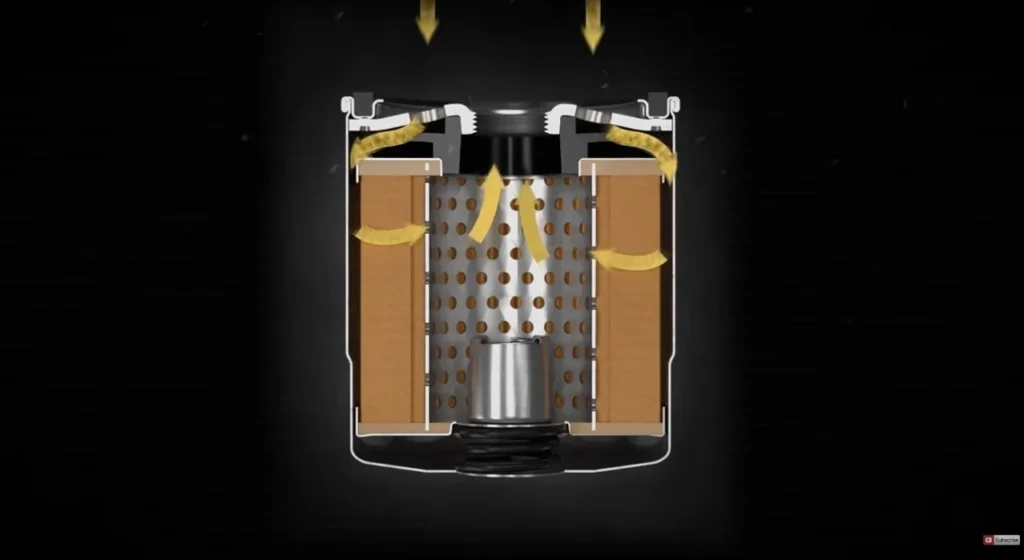Dark, dirty oil and engine noise are clear signs your car needs an oil change. Delaying can cause severe engine damage.
Regular oil changes are essential for maintaining your car’s health and performance. Fresh oil lubricates engine components, reducing friction and preventing overheating. Over time, oil becomes dirty and loses effectiveness. Ignoring oil change signs can lead to costly repairs and decreased fuel efficiency.
Dark oil, engine noise, and dashboard warning lights signal it’s time for a change. Regular checks and timely oil changes ensure your car runs smoothly. Prioritize this simple maintenance task to extend your vehicle’s lifespan and enhance its performance. Stay proactive to avoid expensive issues and keep your engine in top condition.

Credit: www.thomasnissanjoliet.com
Importance Of Regular Oil Changes
Regular oil changes keep your car running smoothly. Clean oil ensures your engine works properly. Skipping oil changes can cause serious engine damage. Always check and replace oil as needed.
Protecting Engine Health
Oil lubricates the engine’s moving parts. It reduces friction and wear. Old oil gets dirty and thick. Dirty oil can harm your engine. Regular oil changes keep the engine clean. A clean engine lasts longer.
Enhancing Performance
Fresh oil improves your car’s performance. It keeps the engine parts moving freely. Clean oil helps the engine run efficiently. An efficient engine uses less fuel. Regular oil changes save you money on gas.
| Signs | Action Needed |
|---|---|
| Check Engine Light | Check oil levels |
| Dark, Dirty Oil | Change oil immediately |
| Engine Noise | Check oil quality |
| Oil Smell Inside Car | Inspect for leaks |
- Check your oil every month
- Use the right type of oil
- Follow your car’s maintenance schedule
- Park your car on level ground
- Turn off the engine and wait for it to cool
- Open the hood and locate the dipstick
- Pull out the dipstick and wipe it clean
- Reinsert the dipstick and pull it out again
- Check the oil level and color
Regular oil changes are key to car health. Protect your engine and improve performance with clean oil.
Warning Lights On Dashboard
Modern cars have sophisticated systems to alert drivers of potential issues. One of the most crucial indicators is the warning lights on your dashboard. Ignoring these lights can lead to severe engine damage. Let’s explore two important warning lights related to oil changes.
Oil Pressure Warning
The oil pressure warning light looks like an oil can. This light signals low oil pressure. Low oil pressure can cause engine parts to wear out. If you see this light, stop your car immediately. Check the oil level using the dipstick. Add oil if needed. If the light stays on, seek professional help. Ignoring this light can lead to expensive repairs.
Check Engine Light
The check engine light can mean many things. One cause is dirty or low oil. Dirty oil can cause engine parts to stick. Low oil can cause engine overheating. If the check engine light comes on, check the oil level. Add oil if it’s low. If the light stays on, visit a mechanic. They can diagnose the exact problem.

Unusual Engine Noises
Unusual engine noises can be a telltale sign that your car needs an oil change. Ignoring these sounds can lead to bigger problems. Pay attention to what your car is telling you. Here are some common noises to listen for:
Knocking Sounds
Knocking sounds often indicate that your engine parts are not lubricated properly. This can happen when the oil is old and dirty. Fresh oil helps reduce friction. Without it, engine parts can clash and make a knocking sound. This is a serious issue. Failing to address it can cause engine damage.
Ticking Noises
Ticking noises usually come from the engine’s valves. These valves need oil to operate smoothly. If the oil level is low, you might hear a ticking sound. This sound is a clear sign that your engine is not getting enough oil. It’s crucial to check the oil level immediately. Adding fresh oil might solve the issue.
| Sound | Possible Cause | Solution |
|---|---|---|
| Knocking Sounds | Old or dirty oil | Change the oil |
| Ticking Noises | Low oil level | Add fresh oil |
- Knocking sounds need immediate attention.
- Ticking noises indicate low oil levels.
- Both sounds can lead to engine damage.
- Regular oil changes prevent these issues.
- Listen for unusual engine noises.
- Check the oil level if you hear ticking.
- Change the oil if you hear knocking.
Make sure to keep your car’s oil fresh and at the right level. Doing so will help keep your engine running smoothly.
Exhaust Smoke Changes
Exhaust smoke can tell you a lot about your car’s health. Changes in exhaust smoke are often signs your car needs an oil change. Different colors of smoke indicate different problems. Understanding these signs can help prevent serious engine damage.
Blue Smoke
Seeing blue smoke from your exhaust means oil is burning. This is a sign of an oil leak. The oil leaks into the engine and burns with the fuel. This can damage your engine over time. Blue smoke usually means worn-out seals or gaskets. It could also indicate worn piston rings. An oil change can help, but you may need repairs.
Black Smoke
Black smoke from your exhaust indicates your car is burning too much fuel. This can mean a problem with the fuel injectors. It could also point to a clogged air filter. Black smoke is a serious issue. It can reduce fuel efficiency and harm the engine. Changing the oil may help, but check other parts too.
Oil Color And Consistency
Oil color and consistency can reveal a lot about your car’s health. Regularly checking these can help you catch problems early. Let’s explore two main signs: dark and dirty oil, and thick and sludgy oil.
Dark And Dirty Oil
Fresh oil is typically amber and translucent. Over time, it collects dirt and becomes darker. Dark oil can indicate that it’s time for a change. To check, pull out the dipstick and wipe it clean. Insert it back in and pull it out again. If the oil on the stick is dark and murky, it needs replacing.
| Oil Condition | Action Needed |
|---|---|
| Amber and Clear | No action needed |
| Dark and Dirty | Change the oil |
Thick And Sludgy Oil
Oil should flow smoothly between engine parts. Over time, it can become thick and sludgy. This can cause engine parts to wear out quickly. To test, check the oil’s consistency on the dipstick. If it feels thick and sticky, it’s time for a change.
- Smooth oil – No action needed
- Thick and sticky oil – Change the oil immediately
Regular oil changes keep your car running smoothly. Don’t ignore these signs. Your car will thank you.
Decreased Fuel Efficiency
One of the most noticeable signs your car needs an oil change is decreased fuel efficiency. Clean oil helps your car run smoothly. Dirty oil, however, can cause the engine to work harder. This leads to more fuel consumption. Let’s dive into the specific signs that show your car is using more fuel than usual.
Frequent Refueling
Have you noticed you’re visiting the gas station more often? This could be due to dirty oil. When the oil is old, it loses its ability to lubricate the engine properly. As a result, your engine has to work harder, burning more fuel. Keep an eye on your refueling patterns. If you find yourself at the pump more frequently, it might be time for an oil change.
Lower Miles Per Gallon
Another clear indicator of decreased fuel efficiency is lower miles per gallon (MPG). When your engine oil is dirty, it creates more friction in the engine. This friction makes the engine less efficient. Over time, you will notice a drop in your car’s MPG. To keep track, you can use your car’s trip computer or manually calculate it. Here’s a simple way to do it:
- Fill your tank.
- Reset your trip odometer.
- Drive until you need to refill.
- Note the miles driven and the gallons used.
Divide the miles driven by the gallons used to get your MPG. If you notice a drop, it might be due to dirty oil.
| Sign | Description |
|---|---|
| Frequent Refueling | More visits to the gas station. |
| Lower MPG | Reduced miles per gallon. |

Oil Smell Inside The Car
:
Noticing an oil smell inside your car can be alarming. This smell often signals that something is wrong. Ignoring it could lead to serious engine issues. Here are some signs to watch for.
Burning Oil Odor
A burning oil odor can mean oil is leaking onto hot engine parts. This is dangerous and needs immediate attention. Here are some causes:
- Worn-out gaskets
- Damaged oil pans
- Loose oil filters
If your car smells like burning oil, it’s time for a check-up.
Strange Smells
Other strange smells inside your car can also signal oil issues. These smells might include:
- Sweet or syrupy smells
- Exhaust fumes
- Gasoline odors
Each of these smells indicates a different problem. Always take strange smells seriously. They can point to bigger issues.
Make sure to schedule regular oil changes. This keeps your car running smoothly.

Credit: finetunedautos.ca
Oil Change Interval
Knowing your car’s oil change interval is crucial. It keeps your engine running smoothly. Different factors affect this interval. Let’s explore them.
Manufacturer Recommendations
Always check your car’s manual. Manufacturers provide specific guidelines for oil changes. Usually, they recommend changing the oil every 3,000 to 5,000 miles. Some modern cars can go up to 7,500 miles or more. Following these recommendations ensures your engine remains in top condition.
Driving Conditions Impact
Your driving conditions affect the oil change interval. Short trips in the city can be tough on your engine. Stop-and-go traffic means you need to change the oil more often. Dusty or dirty roads also impact the oil. They cause the oil to get dirty faster. Long highway drives are easier on the engine. You might extend the oil change interval in such cases. Check the table below for a quick summary.
| Condition | Oil Change Interval |
|---|---|
| City Driving | 3,000 – 4,000 miles |
| Highway Driving | 5,000 to 7,500 miles |
| Dusty Roads | 3,000 – 4,000 miles |
Regular oil changes are key to engine health. Follow the guidelines and monitor your driving conditions. Keeping an eye on these factors helps your car run better and longer.
Frequently Asked Questions
How Often Should I Change My Car Oil?
Change your car oil every 3,000 to 5,000 miles for optimal performance.
What Are The Signs Of Low Oil?
Low oil signs include engine noise, oil warning lights, and decreased performance.
Can Dirty Oil Damage My Engine?
Yes, dirty oil can cause engine wear and reduced efficiency.
What Does the Oil Change Warning Light Mean?
The oil change warning light indicates that your oil needs to be replaced soon.
How Does Dirty Oil Affect Fuel Economy?
Dirty oil reduces fuel efficiency by causing engine friction and inefficiency.
Is My Car Leaking Oil?
Oil puddles under your car and low oil levels indicate a possible leak.
Conclusion
Regular oil changes are crucial for your car’s health. Watch for warning lights, engine noise, or dark oil. Ignoring these signs can lead to costly repairs. Stay proactive and keep your vehicle running smoothly. Schedule an oil change as soon as you notice any of these symptoms.
Your car will thank you.


